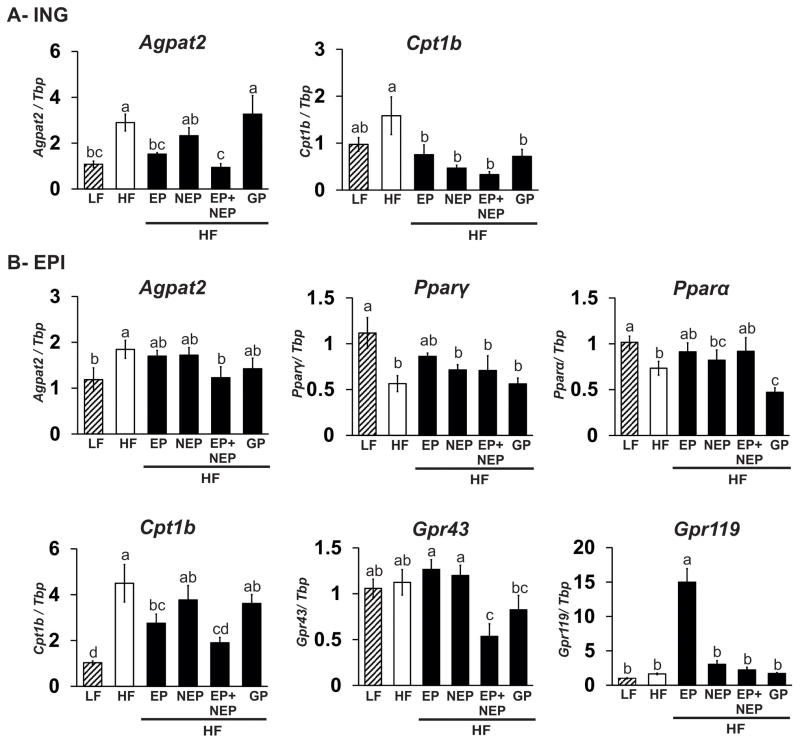Figure 6.
The expression of markers of lipogenesis, lipolysis, or fatty-acid oxidation in inguinal (ING) (A) and epididymal (EPI) (B) WAT of C57BL/6J mice fed a low fat (LF), high fat (HF) diet, or a HF diet containing extractable (HF-EP) or non-extractable (HF-NEP) polyphenols, an equal combination of the EP and NEP fractions (HF-EP+NEP), or grape powder (HF-GP) for 16 weeks. qPCR was conducted to measure mRNA abundance of genes associated with lipogenesis, lipolysis, and fatty-acid oxidation in inguinal (A; subcutaneous) and epididymal (B; visceral) WAT depots. Means ± SEM (n=9–10) without a common lowercase letter differ (p<0.05) using one-way ANOVA and Student’s test.

